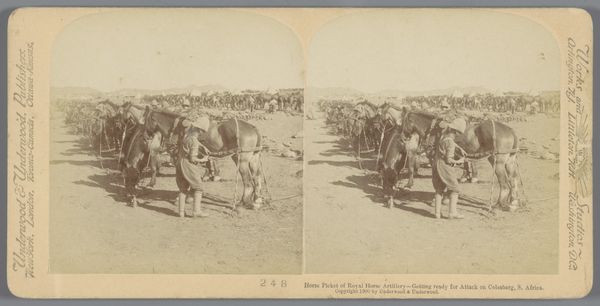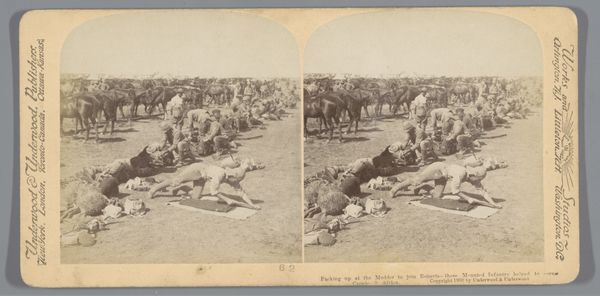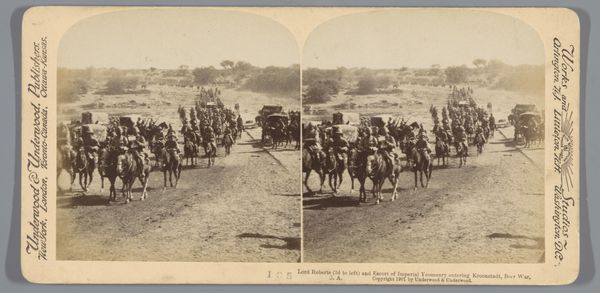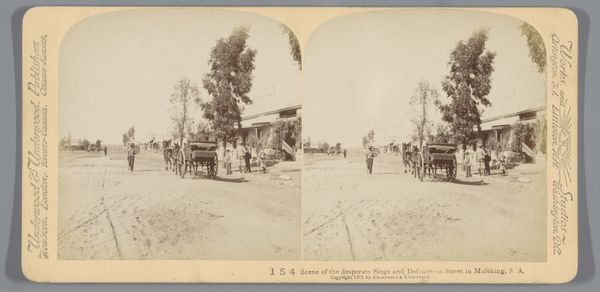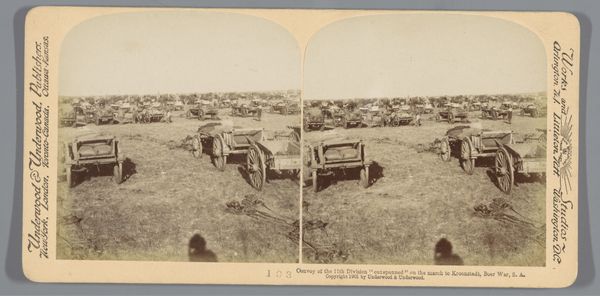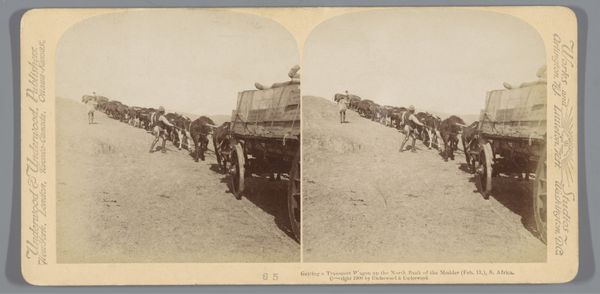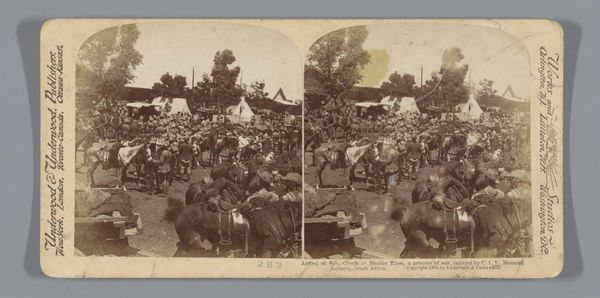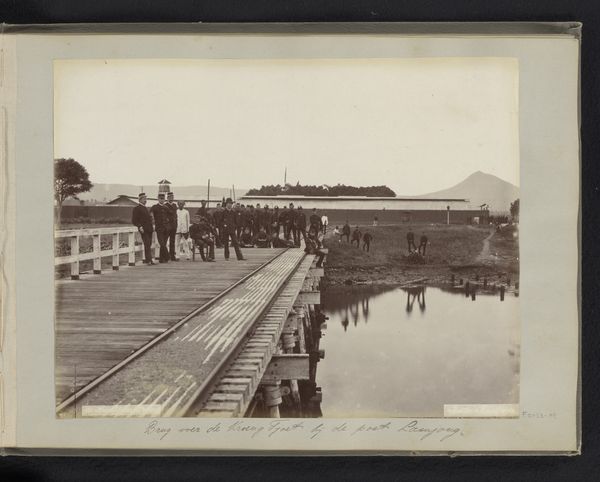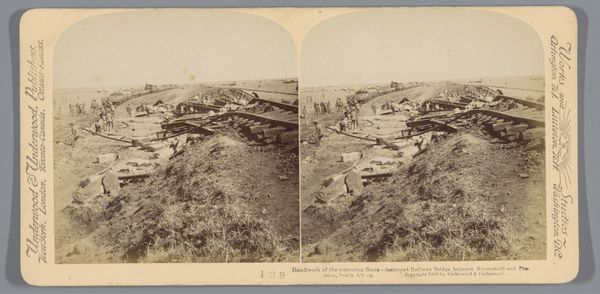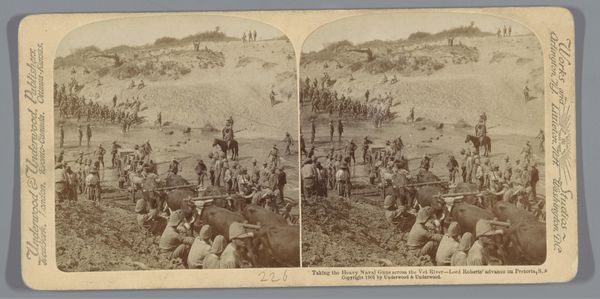
photography
#
still-life-photography
#
landscape
#
photography
#
realism
Dimensions: height 88 mm, width 178 mm
Copyright: Rijks Museum: Open Domain
Editor: This photograph, taken in 1901, is titled "View of a Riverbank with Horse Carts near Kroonstad, South Africa." It seems like a bustling scene, but also a difficult one, judging by the terrain. What stands out to you when you look at this piece? Curator: Well, immediately my eye is drawn to the materiality of it all. We see the tangible realities of transport – the carts, the animals, the river acting as both resource and obstacle. It speaks volumes about labour and the everyday struggles of life at that time and place. Who owned these carts? What was their cargo? Editor: That’s a really interesting point. It made me think about who made the photo and who consumed it. Curator: Exactly! The means of photographic production is equally important. These kinds of stereoscopic images were mass produced, feeding a Western audience's appetite for viewing colonized landscapes. Consider the labor involved: the photographer, the developing process, the distribution… all interwoven with the social context of colonial power. Editor: So you are saying that even in a photograph of this kind there is embedded colonial labour that perhaps isn't immediately visible? Curator: Precisely. And by focusing on the 'how' – how the image was made, circulated, and consumed – we move beyond just what the image depicts and start to unpack its deeper significance. How do you think our perspective is influenced by seeing this today? Editor: It makes me question whose stories were considered worth documenting and sharing. And the way photographs, something we consider objective now, have shaped understandings and biases. Thank you for bringing that to my attention! Curator: It’s fascinating to think about how something like this seemingly simple photograph represents complex interactions of resources, people, and power dynamics.
Comments
No comments
Be the first to comment and join the conversation on the ultimate creative platform.
